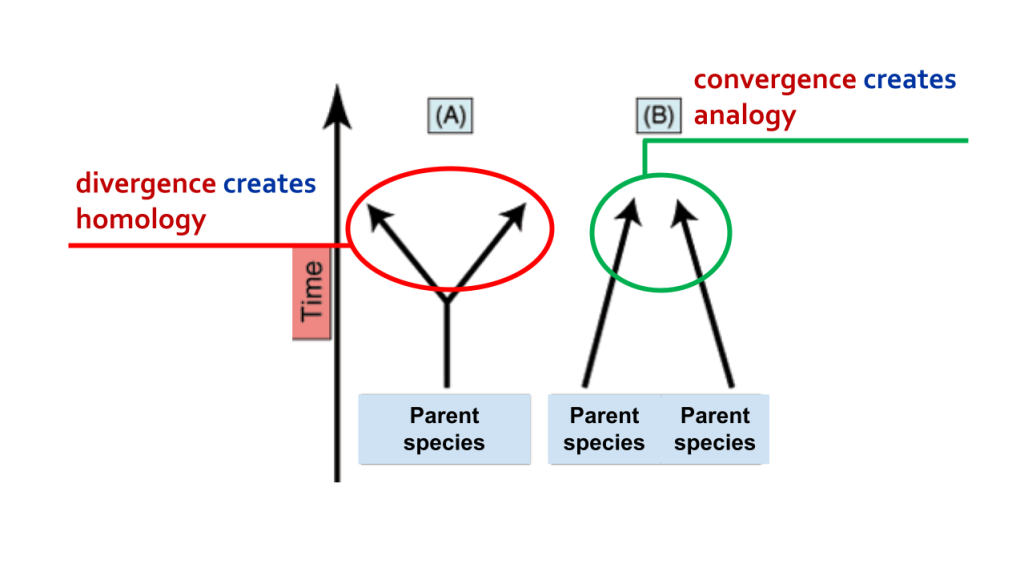5.2 Signals and Traits
Homology and convergence are two traits that often cause confusion for students. For this reason, we will pause for a moment to unpack these forms of solving environmental puzzles that lead to similarities and differences in evolutionary trajectories.
As traits and genes shift in evolution, there are two main directions speciation can occur. One is to come together from different starting points in response to the same environmental challenge. This is called convergence. This is because two or more species converged on the same trait, but from different beginning traits. Convergence creates an analogy – back (ana) reckoning or reason (logos). For example, a shark is a fish, while a dolphin is a mammal. Since their last common ancestor, the species leading to the dolphin came onto land, grew legs, and returned to the water. As a result, they converged on the same body shape as the shark. This is because a streamlined, finned body with a relatively pointed nose is successful at swimming and hunting in the water.
The second is divergence. Divergence occurs when two species have the same beginning trait, but over time speciate based upon successful mutations to that trait. In this way, they use the same initial parts in response to different environmental pressures. The result is homology – the same (homo) reckoning or reason (logos). The mammalian forelimb is the perfect example here. We know that the human arm and hand have the same bones as dogs, with some adaptations for filling different niches. But, did you know, that a horse’s hoof and forelimb is also the same as our arm or the dog’s front leg and paw? The divergence occurred largely at the hoof. As a result of pressures to move a large body quickly on land, a horse’s hoof is akin to having all your fingers fused into one. What’s more, horses essentially run on their fingernails! How cool is that.

the state of having the same or similar relation, relative position, or structure; similarity due to shared ancestry between a pair of structures or genes in different taxa.
the evolutionary process in which the organisms evolve bodily parts that are analogous in terms of structure and function despite their ancestors that are very dissimilar or unrelated.
similarity of function and superficial resemblance of structures that have different origins.
the evolution of different forms or structures in related species as they adapt to different environments.

